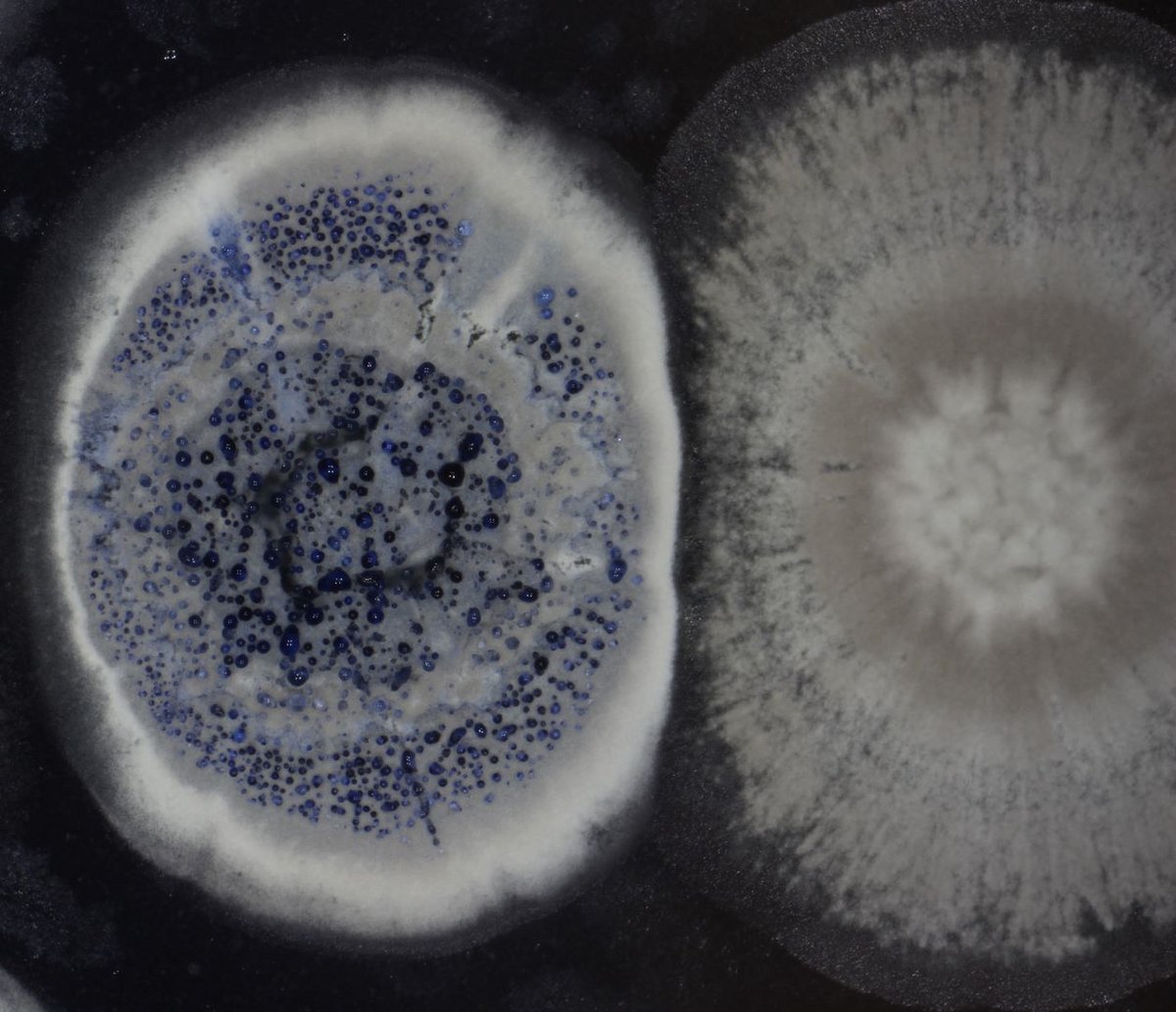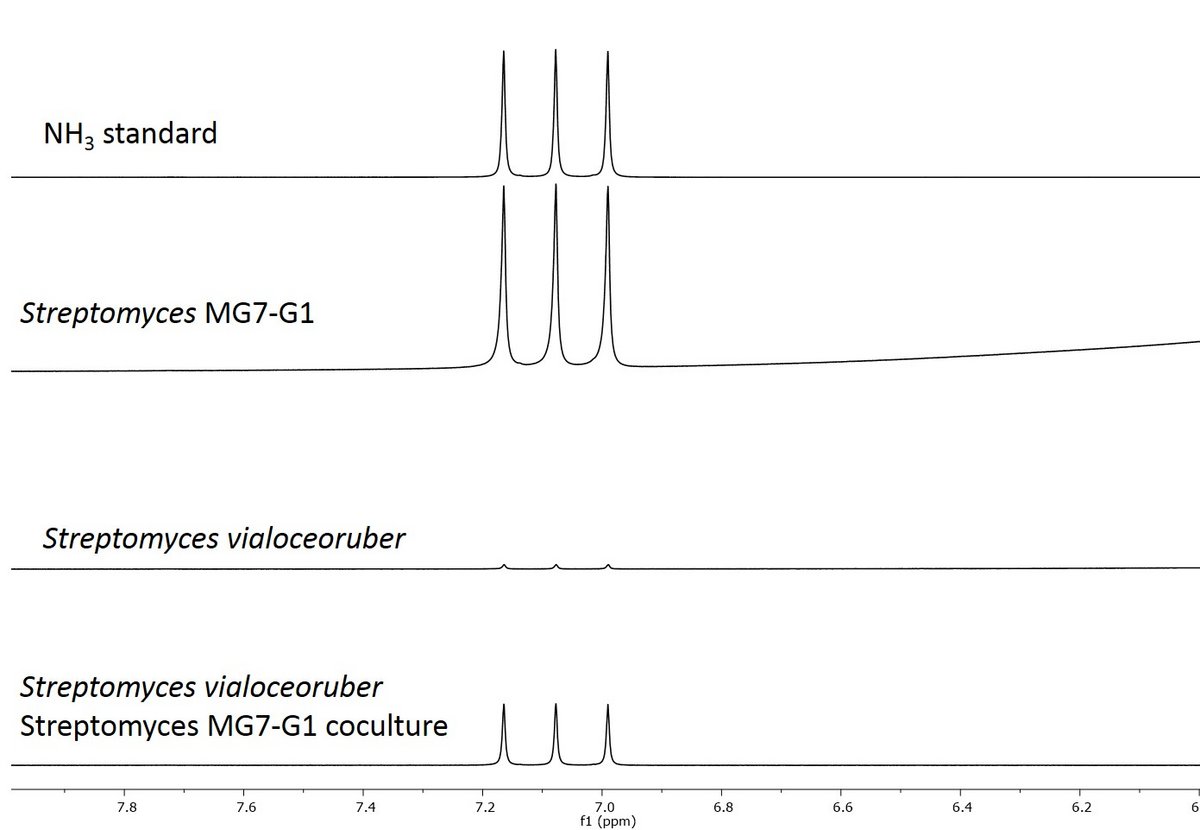Microbial Interactions
In nature microorganisms live together with other microorganisms. In order to address how microorganisms interact with each other we grow them together with others under defined conditions and monitor morphological and metabolic changes.
For example, when Streptomyces violaceoruber is co-cultivated with Streptomyces MG7-G1 (Streptomyces aburaviensis), Streptomyces MG7-G1 induces S. violaceoruber to produce large amounts of droplets on its aerial mycelium as well as to form much more actinorhodin than in single culture (Figure 1).

Figure 1: Induced droplet formation by S. violaceoruber in co-culture with Streptomyces MG7-G1
Although the formation of droplets on top of the aerial mycelim is known from some Streptomycetes it appears to occur quite randomly making it hard to study its biological role. However, in co-culture Streptomyces violaceoruber reproducibly released impressively large quantities of droplets.
In order to identify how the droplet formation in S. violaceoruber is triggered by Streptomyces MG7-G1 a series of experiments was performed. Growing S. violaceoruber physically separated from Streptomyces MG7-G1 allowing only exchange via the air revealed that the droplet inducing compound is volatile. Because the signal could not be identified by standard volatile collection methods (e.g. closed loop stripping) the compound was trapped by addition of molecular sieves leading to significantly reduced droplet formation. By elution of the trapped compounds and their NMR analysis we identified ammonia as droplet inducing compound (Figure 2).

Figure 2: 1H-NMR of trapped volatiles in comparison to ammonia standard.
Application of 3 mM ammonia induces droplet formation in S. violaceoruber similarly to the co cultivation with Streptomyces MG7-G1. The ecological role of ammonia as well as the droplets is under investigation.
Kathrin Schmidt and Dieter Spiteller, J. Chem. Ecol. 2017, 43, 806–816.
